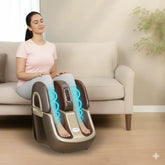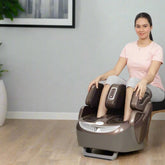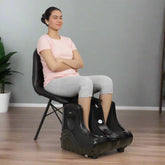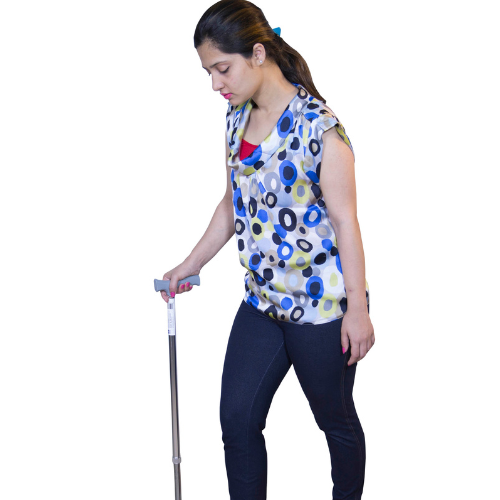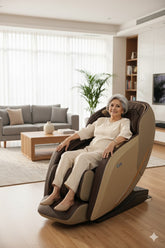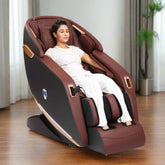Should elderly use walking sticks?
Introduction :
In the discourse surrounding elder care and mobility, the question of "should elderly use walking sticks" frequently arises. This query is not just about providing physical support; it's fundamentally about enhancing seniors' quality of life. Walking sticks offer more than just a means to navigate; they represent autonomy and confidence for many elderly individuals. As we delve into this topic, we aim to shed light on the multifaceted benefits and considerations associated with walking stick usage among the elderly.
Determining "should elderly use walking sticks" involves a nuanced understanding of each individual's needs and circumstances. It's a decision that should be made with input from healthcare professionals, considering factors such as balance, mobility, and personal confidence. The choice to use a walking stick is deeply personal and can significantly impact one's sense of independence and safety. Through this exploration, we hope to provide valuable insights for seniors and their families on making informed decisions regarding walking stick usage.
What stick is used by old people to support walking?
Old people often use a walking stick, cane, or walker to support walking. A walking stick or cane is typically a lightweight rod that can be made of various materials like wood, metal, or composite materials, designed to fit comfortably in the hand. It provides additional stability and balance for those who may have difficulty walking unaided, due to age, injury, or disabilities. A walker, on the other hand, offers more support than a cane. It's a frame made of metal, often with four legs (sometimes with wheels), that a person can lean on and push in front of them as they walk, providing significant support and balance.
So, Should elderly use walking sticks?
Elderly individuals should consider using walking sticks if they experience difficulties with balance, stability, or mobility. Walking sticks can significantly enhance the safety and independence of elderly users by providing additional support, reducing the risk of falls, and easing the strain on joints and muscles. For the elderly, a walking stick acts as a helpful tool for maintaining an active lifestyle, ensuring they can continue to walk with confidence and less fear of injury. It's important for elderly individuals to select a walking stick that is the correct height and comfortable to use, ensuring it provides the optimal support needed. Additionally, consulting with a healthcare professional can help determine if a walking stick is advisable for their specific health conditions and mobility needs.
How do I choose a walking stick for an elderly person?
Choosing a walking stick for an elderly person involves several factors to ensure safety, comfort, and functionality. Here’s a guide to help you make an informed choice:
1. Determine the Purpose
- Daily Use vs. Occasional Use: Decide if the stick is for daily support or occasional use, such as for walks or specific outings.
- Indoor vs. Outdoor: Consider whether the stick will be used indoors, outdoors, or both. Outdoor sticks may require more durable materials.
2. Select the Right Type
- Single-point Sticks: Good for general balance assistance. They are lightweight and versatile.
- Quad Sticks: Have four feet, offering more stability than single-point sticks. Best for those who need additional support.
- Folding Sticks: Offer convenience and portability, ideal for occasional use or travel.
3. Choose the Correct Height
- The user should stand upright with their arms at their sides, and the top of the stick should reach the crease of their wrist. This ensures that the user can hold the stick with a slight bend in their elbow, about a 15-degree angle.
4. Handle Type
- Ergonomic Handles: Designed to reduce hand fatigue and are ideal for those with arthritis or grip strength issues.
- T-shaped Handles: Standard and versatile, suitable for most users.
- Fischer Handles: Shaped to fit the palm, offering better support for those with severe arthritis.
5. Material
- Wood: Classic and durable, but heavier. Can be cut to the desired height.
- Aluminum: Lightweight and adjustable, with some models offering telescopic adjustment.
6. Base Tip
- Consider a rubber tip for grip. Some sticks come with interchangeable tips for different terrains or conditions.
7. Weight Capacity
- Ensure the stick can support the user’s weight. Most sticks have a weight capacity listed in their specifications.
8. Adjustability
- An adjustable stick can be a good choice if the exact height is uncertain or if it will be used by people of different heights.
9. Personal Preference and Style
- Comfort and functionality are paramount, but the style can also be important. There are many designs available to suit personal tastes.
10. Consult a Healthcare Professional
- If in doubt, seek advice from a healthcare professional such as a physiotherapist. They can provide personalized recommendations based on the user’s specific needs and health condition.
Remember, the right walking stick can significantly improve an elderly person's mobility and independence, so it's worth spending the time to choose the best option for their needs.
Conclusion on Should elderly use walking sticks?
Should elderly use walking sticks? This question resonates through multiple facets of healthcare and personal well-being. In considering whether should elderly use walking sticks, it's important to weigh the benefits of improved mobility and reduced fall risk against the potential dependency on mobility aids. For many seniors, the use of a walking stick signifies not just a tool for support but a means to maintain an active lifestyle. Therefore, when asking should elderly use walking sticks, the answer leans towards a positive affirmation, especially for those experiencing balance or mobility issues. Ultimately, should elderly use walking sticks comes down to individual needs and circumstances, advocating for a personalized approach to enhance safety and independence in older age.

